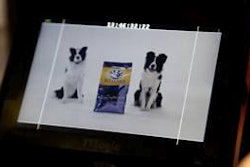When the full membership of the Association of American Feed Control Officials (AAFCO) voted in January to adopt a regulation that requires calorie-content statements on all cat food and dog food labels, it ended an eight-year-long debate that was sometimes contentious. (If you have ever doubted that rule-making bodies take a long time to reach final decisions, here's yet another piece of proof.)
Actually, the debate is not completely over: AAFCO still has to decide when the new regulation will take effect. Part of the decision was to allow an 18-month grace period for compliance for new products and three years for existing products; yet the Pet Food Committee within AAFCO recommended to start the grace period with the release of the 2014 AAFCO Official Publication, while the board of directors want to start it now. That issue will likely not be resolved for at least another five months, at AAFCO's annual meeting in August.
Whenever the clock starts on compliance, the bottom line is that any cat or dog food sold in the US will be required to not only list calories on their labels but also express those calories in terms of both per-kilogram and per-common unit (e.g., cans, cups, pieces) and identify the method of determination (calculated vs. fed). Some provisions of the regulation originally proposed -- such as a requirement to analyze at least four production batches to derive the calculated value and the need to limit values declared for those determined by the feeding-trial method to within 15% of the calculation method value -- were dropped from the final regulation. David Dzanis, DVM, PhD, DACVN, of Regulatory Discretion Inc. says that should make it easier for petfood manufacturers to comply and state feed officials to verify.
Perhaps. No matter what, this will require additional effort, expense and creativity from manufacturers trying to squeeze even more information on already crowded petfood labels. Yet the intent of the regulation -- the very reason the American College of Veterinary Nutrition proposed it lo those long eight years ago -- was to try and curb the rising rate of pet obesity in the US. And unfortunately, that rate, like many pets' weight, keeps going up.
According to the latest survey from the Association for Pet Obesity Prevention, the US pet obesity rate hit an all-time high in 2012: 52.5% of dogs and 58.3% of cats are now considered overweight or obese by their veterinarians. That translates to about 80 million pets at risk for disorders such as diabetes, osteoarthritis, hypertension, many cancers and joint problems. In fact, the dog breeds with the highest rate of overweight or obesity are Golden Retrievers (62.7%) and Labrador Retrievers (58.9%); and both breeds are prone to musculoskeletal conditions.
What's worse, the survey shows, is that many owners of overweight or obese pets are, well, clueless: About 45% of respondents considered their pets as being normal weight, while their veterinarians assessed the pets as overweight.
Clearly, some education is needed. Will calorie-content statements single-handedly accomplish the goal of educating such owners? Some critics of the AAFCO regulation have argued during the years-long debate that human food labels have been required to include calorie contents for some time in the US, yet human obesity rates keep rising, too.
This is true. Yet in my opinion, the education process for pet owners has to start somewhere. Some information is better than none; and I especially like that the new regulation will require calories to also be expressed in common units that most pet owners can comprehend. Plus, the label statements will give veterinarians a tool to advise owners of overweight pets on where to start to slim down their tubby tabbies or fat fidos.
Full disclosure: My two cats are overweight, one just by a few ounces, one by a couple pounds. Unlike some other pet owners, at least I'm fully aware that they're overweight and doing all I can to bring their weight down. But I often feel as though I have to figure this out on my own. The veterinarians at the animal hospital where I take my cats are very good at treating and even preventing other common pet disorders and conditions, along with advising on behavioral issues. But when I bring up the cats' weight, the vets' reaction ranges from helplessness ("Yes, they could stand to lose a little, but it sounds as though you're doing what you can...") to outright indifference ("Well, they're healthy otherwise, so you really shouldn't worry").
Let's face it, most veterinarians receive little to no education or training in pet nutrition or feeding; pet owners know far less. In my view, calorie content statements are a starting point for educating both groups that could lead to additional opportunities for them to learn even more about what -- and how much -- pets should eat.
For example, Patty Khuly, VMD, a veterinarian who also blogs and serves as an expert adviser on websites like VetStreet.com, has developed an app for the iPhone called The Fat Dog Diet. It includes the calories and other nutrient contents for many dog foods on the market, so dog owners and their vets can figure out how to develop a weight-loss program for an individual dog. Dr. Khuly said she is working on a similar app for cat foods.
















